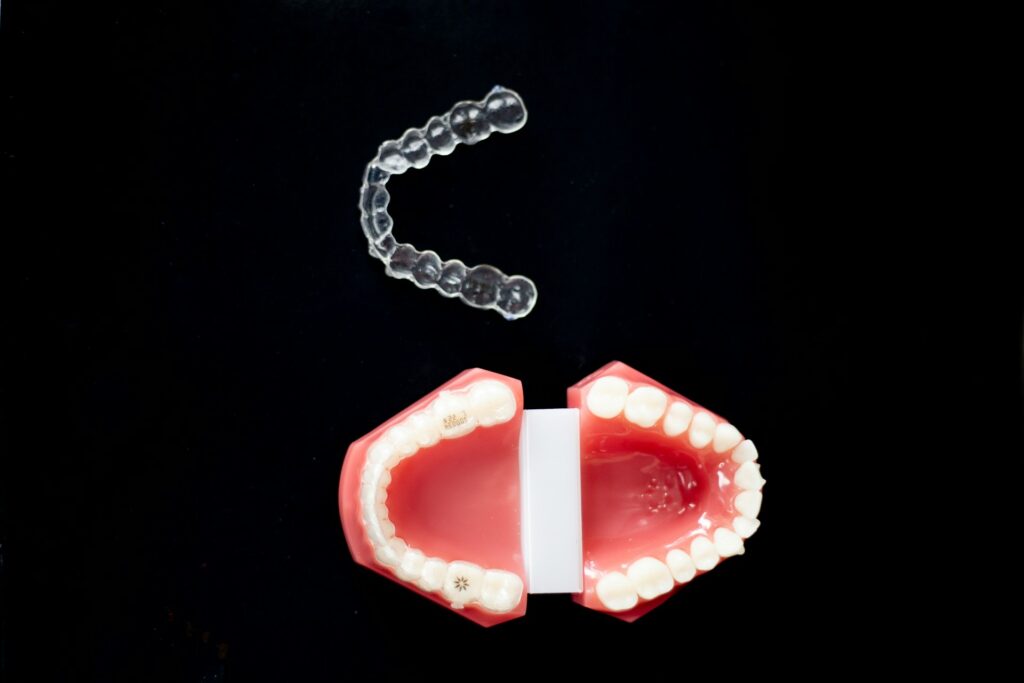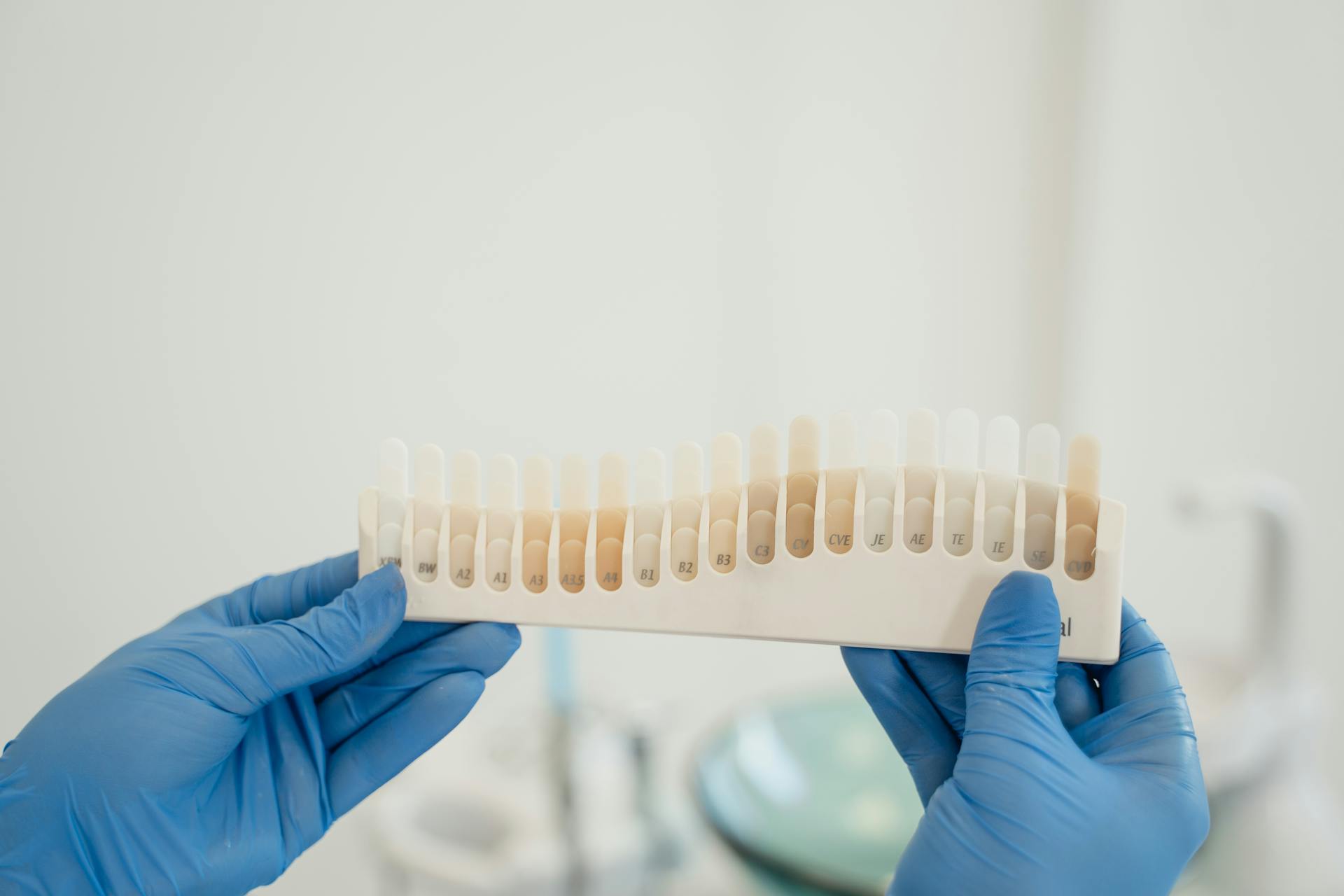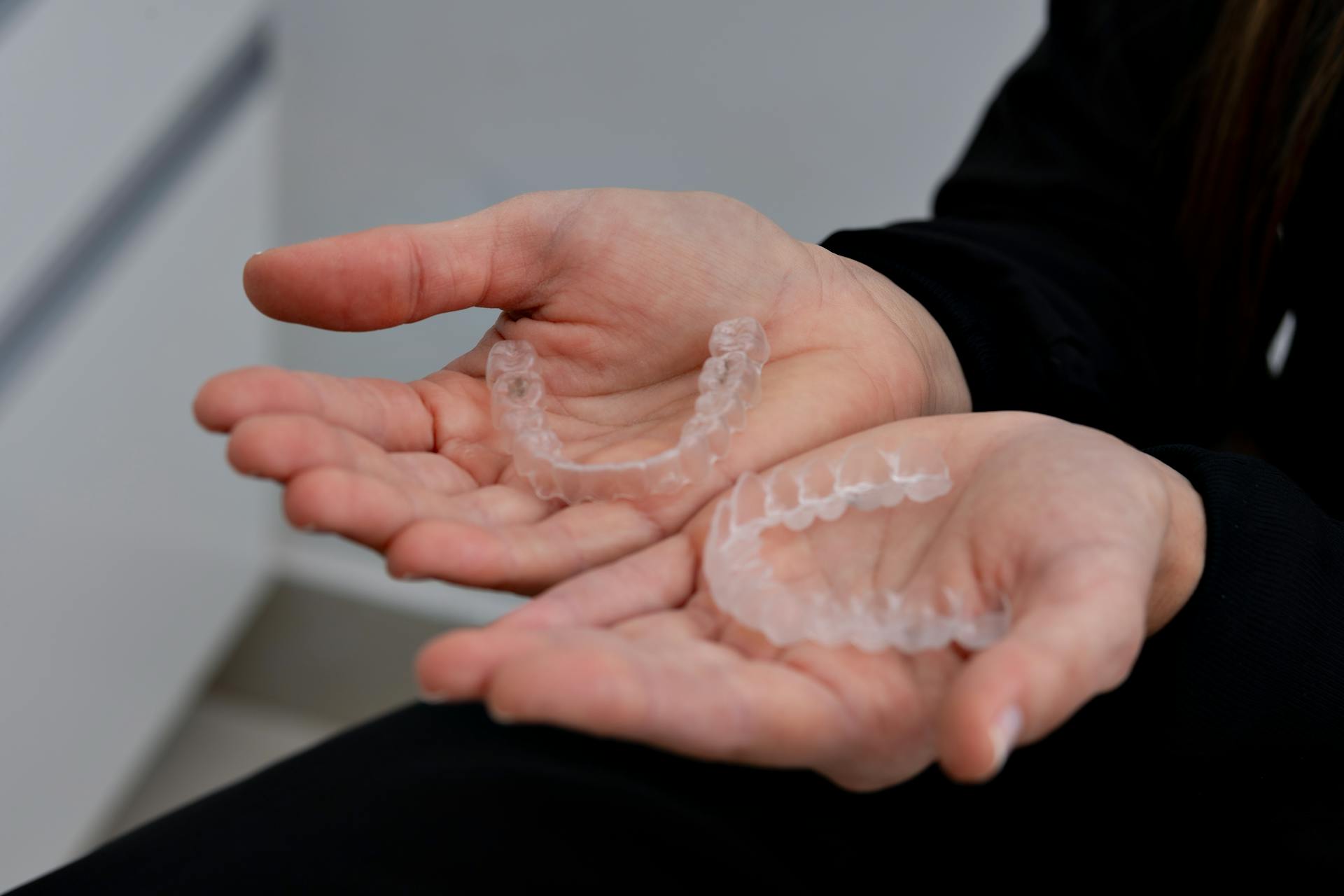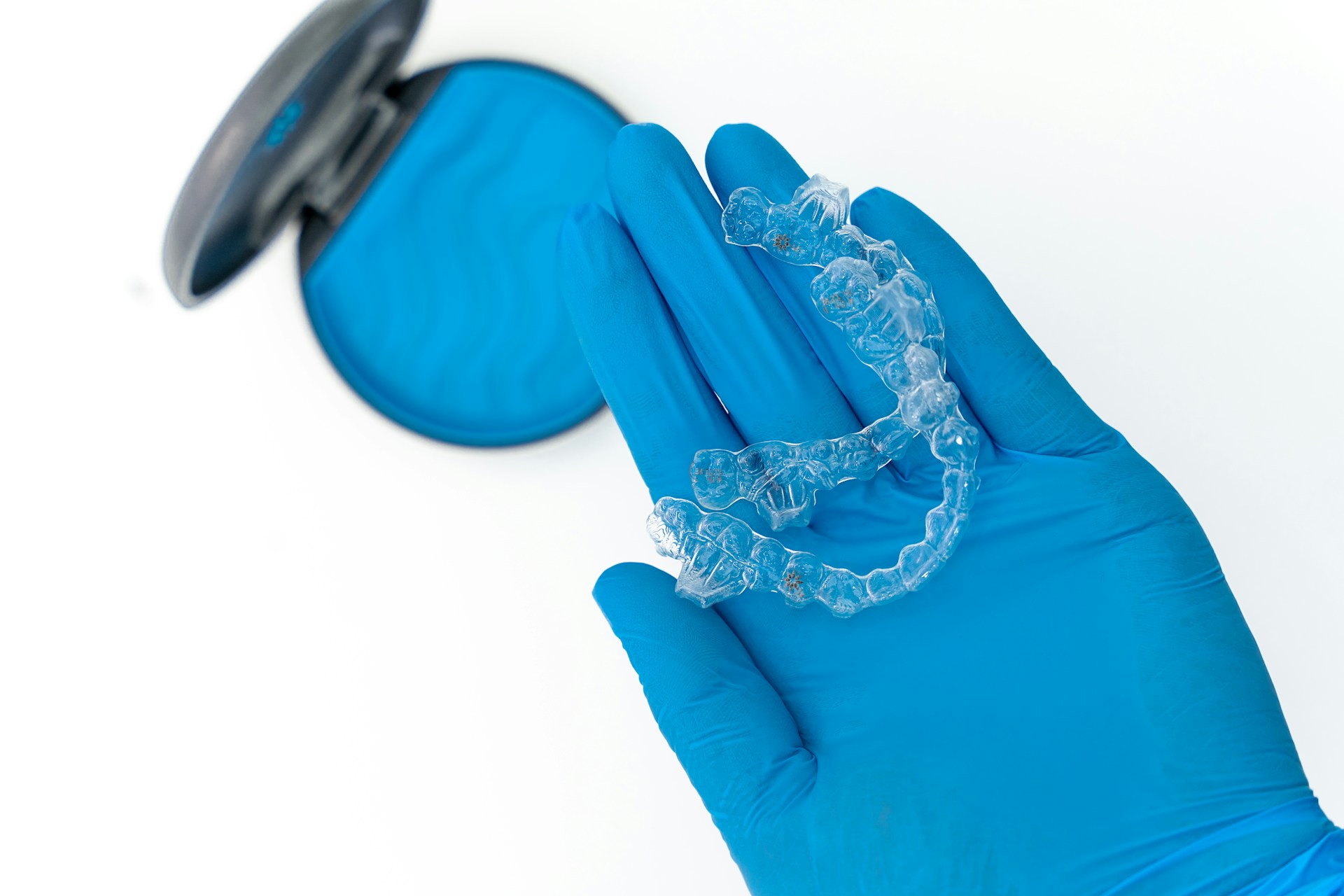
A radiant smile has the power to significantly boost your confidence and improve your overall appearance. If you are contemplating a smile makeover, you may have come across two popular options: Invisalign and veneers. Each of these choices presents distinct advantages, and when used in conjunction, they can yield truly remarkable results.
This article will delve into what a smile makeover involves, how Invisalign and veneers function both separately and together, and outline the step-by-step process to help you achieve your ideal smile. Additionally, we will discuss the effects of combining invisalign and veneers in a smile makeover, the costs associated with these options to assist you in determining whether this combination is the right fit for you.
What Is a Smile Makeover?

A smile makeover represents a comprehensive approach to enhancing the overall appearance of one’s smile by utilising a range of cosmetic dentistry techniques specifically designed to meet individual dental aesthetics and personal needs.
This transformative process aims to improve your smile through a combination of procedures, including teeth alignment, tooth whitening, dental veneers, and orthodontics.
The ultimate goal is to increase confidence in your smile while significantly enhancing facial aesthetics.
What Are the Different Options for a Smile Makeover?
When considering a smile makeover, patients are presented with several options, each tailored to address specific cosmetic concerns and achieve distinct aesthetic goals. These options can encompass restorative dentistry procedures, such as dental veneers, orthodontic treatments like Invisalign, and tooth whitening techniques, all contributing to a comprehensive journey of smile enhancement.
For example, dental veneers can effectively transform chipped, discoloured, or misaligned teeth, resulting in a uniform and radiant smile. Patients often appreciate their durability and resistance to stains; however, it is important to note that their application requires some enamel removal and is not reversible.
On the other hand, Invisalign provides a more discreet method for correcting misalignment, making it particularly appealing to adults who wish to pursue orthodontic treatment without the visibility of traditional braces. While it offers flexibility and comfort, it may not be suitable for addressing severe dental issues.
Case studies illustrate individuals who have combined whitening treatments and veneers to achieve smiles that greatly enhance their self-esteem and social interactions, demonstrating the remarkable transformative power of smile makeovers.
What Is Invisalign?
Invisalign is an advanced orthodontic treatment that employs clear aligners to gradually straighten teeth and enhance overall alignment. It offers a discreet alternative to traditional metal braces.
Suitable for both adults and teenagers, Invisalign enables individuals to pursue orthodontic treatment with a focus on comfort and aesthetics. Simultaneously, it effectively addresses concerns such as bite correction and dental imperfections.
How Does Invisalign Work?
The Invisalign process begins with a comprehensive dental consultation, during which a personalised treatment plan is created using advanced digital smile design technology. This initial phase involves crafting a series of custom clear aligners that will gradually shift your teeth into the desired position. The aim is to ensure precise and effective alignment while prioritising patient comfort throughout the treatment.
After the initial consultation, digital impressions of your teeth are taken, providing an accurate representation of your dental structure. This data is then used to develop a detailed 3D model, which helps simulate the entire treatment journey.
Once the aligners are created, patients receive their first set along with clear instructions on how to wear and care for them. Regular follow-up appointments are scheduled to monitor progress and make any necessary adjustments.
This emphasises the importance of patient education regarding the maintenance of aligners to achieve optimal results and to ensure a beautiful, confident smile.
What Are the Benefits of Invisalign?
Invisalign presents a variety of benefits that enhance both comfort and aesthetics, making it a popular option for many patients seeking orthodontic treatment. Among these advantages are increased confidence in one’s smile due to the discreet nature of clear aligners, greater comfort when compared to traditional braces, and significant health benefits, including simpler maintenance of dental hygiene and improved gum health throughout the treatment process.
Moreover, patients often express their contentment with the flexibility that removable aligners provide, allowing them to go about their daily lives with minimal interruptions. The freedom to enjoy favourite foods without restrictions and the ability to remove aligners for special events are particularly appealing for those aiming for long-term results.
Testimonials often highlight how much individuals value Invisalign’s alignment with their aesthetic aspirations, delivering both functional improvements and visual enhancements. Prospective patients frequently feel reassured by the clear expectations communicated during the initial consultation, which helps them navigate their orthodontic journey with confidence and clarity.
What Are the Limitations of Invisalign?
Invisalign is indeed an effective orthodontic treatment for many individuals, but it does have certain limitations that should be considered before opting for this method for a smile makeover. Factors such as the severity of tooth misalignment, age, and the necessity of adhering to the recommended duration for wearing aligners can significantly influence the overall effectiveness of the treatment.
Individuals with more complex dental issues, such as significant gaps, rotated teeth, or bite problems, may find that traditional braces offer greater precision and control over tooth movement.
It is crucial for prospective users to engage in an open and honest discussion with their orthodontist to assess whether their specific needs align with what Invisalign can deliver.
Some individuals might also experience discomfort during the adjustment phases, and there is always the possibility of not achieving the desired outcomes if the aligners are not worn consistently as prescribed.
By carefully considering these factors alongside their personal cosmetic goals, individuals can make a more informed decision about their journey towards a better smile.
What Are Veneers?

Veneers are thin shells created from dental materials that are custom-designed to cover the front surface of teeth. They offer an effective solution for enhancing smiles that may be affected by various imperfections.
This cosmetic procedure is particularly suitable for addressing concerns such as discolouration, chips, and gaps, and it plays a significant role in achieving a complete smile makeover.
By improving dental aesthetics, veneers can greatly enhance the overall quality of one’s smile.
How Are Veneers Applied?
The application of dental veneers involves several important steps, beginning with a comprehensive dental consultation and assessment. This initial meeting is crucial for determining the best approach to meet each patient’s smile enhancement goals.
Typically, the process includes shaping the teeth to ensure that the veneers fit comfortably and securely. Once that is done, the veneers are carefully bonded to the prepared teeth to achieve a natural and aesthetically pleasing result.
Each veneer is custom-made from high-quality materials such as porcelain or composite resin. These materials play a vital role in achieving the desired aesthetic outcomes and ensuring durability.
During the consultation, the dentist will also discuss enamel bonding techniques designed to secure the veneers while preserving the natural tooth structure. This personalised treatment plan aligns with the individual’s dental health needs and ensures that the final results harmonise with their facial features.
Following the procedure, proper follow-up care is essential to maintain the longevity and appearance of the veneers. This allows for necessary adjustments and ongoing monitoring to ensure continued patient satisfaction.
What Are the Benefits of Veneers?
The advantages of dental veneers go far beyond just improving appearance; they can greatly boost confidence in one’s smile and contribute positively to overall oral health. By effectively masking tooth imperfections and providing a natural look, veneers help create a more harmonious smile while also being durable and resistant to stains.
When individuals contemplate the idea of adding veneers to their smile makeover, they often discover that these thin shells made of porcelain or composite material not only deliver a lifelike appearance but also possess remarkable longevity. This makes them a sensible investment in their dental journey.
Caring for veneers is quite simple, as it requires the same attention as natural teeth. Regular brushing and flossing are key to keeping them looking their best.
Most importantly, the transformative effects of veneers can be truly life-changing. They can help individuals regain their self-esteem and improve their social interactions. With a bright, radiant smile, the world can seem much more inviting, encouraging many to consider this effective treatment as a way to restore their confidence.
What Are the Limitations of Veneers?
Veneers offer numerous advantages, but they also come with certain limitations that potential patients should carefully consider before incorporating them into their smile enhancement plans. It is essential to undergo a dental assessment to determine one’s suitability for this procedure, alongside considerations related to tooth shaping and the permanence of the treatment.
The cost of veneers can be a significant factor for some individuals, as this cosmetic dental option often entails a considerable financial investment and typically is not covered by insurance. Additionally, there are potential treatment risks to consider, such as sensitivity, decay occurring beneath the veneer, or damage resulting from improper maintenance.
Regular check-ups and specific oral hygiene practices become essential, as neglecting these can lead to complications. Therefore, individuals should thoughtfully reflect on these factors, weighing them against their unique smile enhancement goals and personal preferences before making a final decision.
What Are the Advantages of Combining Invisalign and Veneers?
Combining Invisalign and veneers presents a cohesive approach to achieving a complete smile transformation.
This method allows patients to address both alignment and aesthetic concerns simultaneously.
By using this powerful combination, individuals can take advantage of the teeth-straightening benefits of clear aligners while enhancing the appearance of their teeth with expertly crafted veneers.
How Do Invisalign and Veneers Work Together?
The combination of Invisalign and veneers provides a comprehensive experience for patients looking to significantly enhance their smile. Initially, Invisalign aligns the teeth, setting the stage for veneers to improve their appearance. This coordinated approach allows patients to achieve optimal results, effectively addressing both functional and aesthetic concerns in a structured manner.
By utilising digital smile design technology, a skilled cosmetic dentist can create a personalised treatment plan tailored to each patient’s unique dental structure and aesthetic goals. This careful planning facilitates a smooth transition from alignment to enhancement. The precise positioning of teeth achieved through Invisalign serves as an excellent foundation for applying veneers.
Patients embark on a transformative journey where their expectations are not only met but often surpassed, resulting in beautiful, harmonious smiles that enhance their facial features and boost their self-confidence. The expert guidance provided throughout this process is essential in ensuring outstanding aesthetic outcomes, allowing patients to feel comfortable and excited about their smile transformation.
What Are the Results of Combining Invisalign and Veneers?
Combining Invisalign and veneers can result in a remarkable smile makeover that greatly enhances the quality of one’s smile, boosts self-confidence, and improves overall dental aesthetics. Many patients share their transformative experiences, often highlighting the impressive before-and-after results that this combined approach provides.
Numerous case studies indicate a consistent pattern of satisfaction among individuals who have chosen this enhanced treatment. For example, one patient recounted how their previously crooked teeth, which had been a source of self-consciousness, turned into a confident feature after completing the Invisalign treatment and having veneers placed.
Another testimonial describes the joy felt when a long-standing desire for a flawless smile was finally achieved, thanks to the seamless integration of these two methods. The aesthetic benefits not only contributed to improved oral health but also significantly enhanced their personal and professional lives, demonstrating that such comprehensive dental procedures can have profound and lasting impacts on overall happiness.
What Is the Process of Combining Invisalign and Veneers in a Smile Makeover?

Combining Invisalign and veneers in a comprehensive smile makeover involves several important steps.
The process begins with an initial dental consultation where goals are discussed, and a personalised treatment plan is developed. In many cases, temporary veneers may be used during the treatment journey to provide an immediate improvement in aesthetics while Invisalign works to align the teeth. This allows patients to enjoy a more confident smile even as their full transformation progresses.
This thorough approach ensures that every aspect of the patient’s oral care is taken into account, from teeth alignment to aesthetic enhancements, ultimately leading to the best possible results.
Step 1: Consultation and Treatment Plan
The initial step in combining Invisalign and veneers involves a comprehensive dental consultation. During this meeting, the dentist evaluates the patient’s oral health, discusses any cosmetic concerns, and helps to establish personalised treatment options that cater to individual preferences and aesthetic goals. This foundational step is essential for laying the groundwork for a successful smile makeover journey.
During the consultation, the dentist takes the time to actively listen to the patient’s concerns and expectations, ensuring that clear communication is established from the very beginning. This phase includes a thorough cosmetic evaluation, allowing the dentist to identify specific areas that may need enhancement.
Financial considerations are also an important aspect of the discussion; exploring financing options and treatment costs helps patients grasp the investment required to achieve their desired results. By fostering an open dialogue about preferences and expected outcomes, the dentist can create a tailored treatment plan that aligns with the patient’s vision while also providing realistic timelines and expectations for the process ahead.
Step 2: Invisalign Treatment
Once the consultation is complete, the Invisalign treatment phase begins. During this phase, patients receive a series of custom clear aligners, which they will wear according to a prescribed schedule that typically spans several months. The duration of this treatment varies based on individual goals and the complexity of the teeth alignment issues, allowing for a gradual and comfortable adjustment process.
Each aligner is meticulously crafted using advanced dental technology to shift teeth into the desired position with precision. As patients move through the series of aligners, they can expect to see gradual changes, with each aligner typically worn for about two weeks before moving on to the next.
A notable advantage of this treatment is its emphasis on patient comfort. The aligners are made from smooth, BPA-free plastic, which helps to minimise irritation to the gums and soft tissues of the mouth.
Many patients appreciate the effectiveness of the treatment, with most noticing significant improvements in their smiles without the need for traditional braces. Regular check-ups with the orthodontist ensure that the treatment is progressing as planned, providing reassurance and allowing for any necessary adjustments.
Step 3: Veneers Preparation and Placement
Once tooth alignment is achieved through Invisalign, the next step is preparing and placing dental veneers to enhance the overall appearance of the smile. This important phase involves careful tooth shaping and bonding of the veneers to ensure a natural look and optimal fit tailored to each patient’s unique dental aesthetics.
During this procedure, the dentist typically removes a thin layer of enamel from the surface of the teeth. This step is essential as it creates the necessary space for the veneers to adhere effectively. The enamel bonding process is significant because it enhances the longevity of the veneers and contributes to achieving aesthetic outcomes that blend seamlessly with the surrounding natural teeth.
Patients can expect the use of advanced dental materials that are designed to mimic the translucence and texture of real tooth enamel, ensuring that the final smile appears both vibrant and genuine. Maintaining open communication with the dental professional throughout this phase is beneficial, as it allows for any adjustments needed to achieve perfect symmetry and overall harmony in the smile.
Step 4: Final Touches and Maintenance
The final step in combining Invisalign and veneers involves making any necessary adjustments and ensuring that patients are well-informed about the maintenance care required to preserve their new smile. This includes scheduling follow-up appointments to monitor results and provide ongoing support, which is essential for ensuring long-term satisfaction with the cosmetic improvements achieved.
Such care plays a crucial role in treatment outcomes and significantly enhances patient satisfaction. Regular check-ups are beneficial as they help identify potential issues early on, while also allowing for personalised advice tailored to the individual’s lifestyle factors, such as dietary habits and oral hygiene practices.
By adopting a proactive approach to oral care, patients can maximise the benefits of their treatment and ensure that their impressive results endure for years to come. Furthermore, ongoing communication between the patient and dental professionals creates a supportive environment that encourages adherence to recommended maintenance routines.
What Are the Costs of Combining Invisalign and Veneers?
When evaluating the costs associated with combining Invisalign and veneers, it is important to recognise that this investment in dental aesthetics can differ significantly depending on a few key factors.
These include the complexity of the treatment, the geographic location, and the specific dental needs of the individual. Patients should also be aware that they may incur consultation fees in addition to the overall expenses associated with the procedures needed to achieve their desired smile transformation.
How Do the Costs Compare to Other Smile Makeover Options?
When comparing the costs of combining Invisalign and veneers with other smile makeover options, it is important to recognise that, while these procedures may require a larger upfront investment, they often provide long-term benefits and satisfaction that justify the expenditure. Each cosmetic procedure comes with its own set of costs, and understanding these variances can assist patients in making informed decisions about their dental care.
In considering treatment expectations, many patients appreciate that Invisalign’s clear aligners offer a discreet and comfortable alternative to traditional braces, which can be both visible and cumbersome. Simultaneously, veneers can significantly enhance the appearance of teeth by addressing issues such as discolouration, chipping, and misalignment. Feedback from patients consistently indicates that combining these two innovations can result in a radiant smile that boosts confidence.
In contrast to teeth whitening options, which may yield only temporary results, the durability of veneers, along with the effectiveness of Invisalign, makes this combination an appealing choice for those seeking lasting improvements in their dental aesthetics. Ultimately, evaluating these options against other popular treatments can give the power to individuals in their quest for the perfect smile.
Is Combining Invisalign and Veneers Right for You?

Deciding whether to combine Invisalign and veneers requires careful consideration of several factors, such as your specific smile goals, dental health, and personal preferences.
It’s important to engage in an open conversation with your dentist about any cosmetic concerns and your desired outcomes.
This discussion can greatly assist in making an informed decision that is tailored to your unique needs.
What Factors Should You Consider Before Deciding on This Treatment?
Before deciding on a combined treatment of Invisalign and veneers, there are several important factors to consider that can affect both the effectiveness and satisfaction of the results. These factors include the severity of tooth imperfections, budget considerations, and the need for patient education to understand the maintenance required after treatment.
It is essential for individuals to undergo a comprehensive dental assessment to evaluate their unique dental health and needs, as this will guide them in determining the most suitable course of action. In some cases, dental crowns may also be recommended as part of the treatment plan, especially for teeth that require structural reinforcement in addition to aesthetic improvement.
The duration of treatment is another critical element to discuss; while Invisalign may take several months to realign teeth, veneers and crowns can often be placed relatively quickly once the teeth are adequately prepared.
Additionally, patient demographics can significantly influence the treatment process and the long-term retention of results, with factors such as age, dental history, and lifestyle choices all playing a role.
Ultimately, being well-informed and aligning one’s expectations with professional recommendations can contribute to a more satisfying dental experience.
Frequently Asked Questions
Is it possible combining invisalign and veneers in a smile makeover?
Yes, it is possible to combine Invisalign and veneers in a smile makeover. Invisalign can help straighten your teeth while veneers can improve the appearance of your smile by covering imperfections.
What is the benefit of combining Invisalign and veneers?
Combining Invisalign and veneers can provide a comprehensive solution for both alignment and cosmetic concerns. This combination can help achieve a more balanced and aesthetically pleasing smile.
Is it necessary to get veneers after completing Invisalign treatment?
No, it is not necessary to get veneers after completing Invisalign treatment. However, for cases where teeth require additional cosmetic improvements, veneers can be a great option to enhance the overall appearance of the smile.
How long does the combination of Invisalign and veneers take for a smile makeover?
The length of time for a smile makeover using Invisalign and veneers can vary depending on individual treatment plans. In general, Invisalign treatment can take anywhere from 6-18 months, while veneers can typically be completed in 2-3 visits.
Can I get Invisalign and veneers at the same time?
Yes, it is possible to get Invisalign and veneers at the same time. In some cases, it may be more efficient and cost-effective to combine both treatments into one comprehensive plan.
Are there any risks or complications with combining Invisalign and veneers?
There are no known risks or complications specifically associated with combining Invisalign and veneers. However, it is important to consult with a qualified and experienced dentist to determine the best treatment plan for your individual needs.






